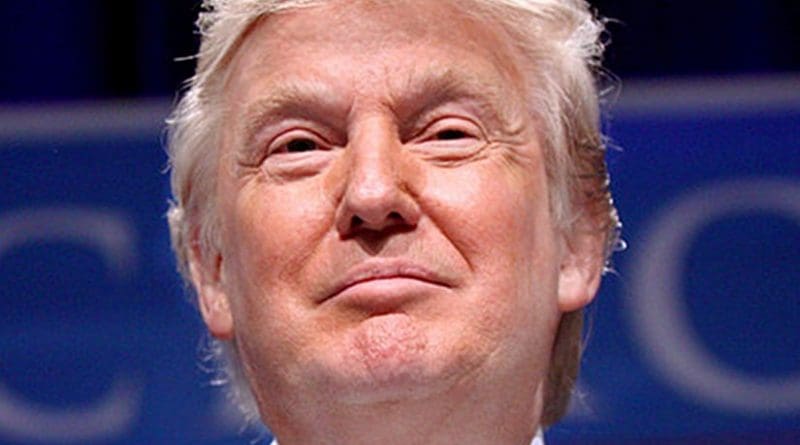EU Commission: Trump Stimulus Payment ‘Gonna Be Huge’ But Inconsequential
By EurActiv
By Jorge Valero
(EurActiv) — The European Commission predicted in its winter forecast €226 billion in additional spending as part of the fiscal stimulus promised by the new US government, but the economic impact of Trump’s plan will be “very low”.
US President Donald Trump promised a ‘huge’ package to rebuild highways, bridges, airports and schools across America.
“We’re going to rebuild our infrastructure, which will become, by the way, second to none,” he said after he was elected last November.
On Monday (13 February) the Commission agreed with Trump – at least when it comes to the final bill.
Despite the fact that the details of the fiscal stimulus are unknown, the executive estimated additional spending of 0.3% of GDP in 2017 and an additional 1% of GDP in 2018, according to its winter forecast.
This would represent around €226 billion poured into the American economy over the next two years.
The impact on the deficit will also be significant.
According to the forecast, the US deficit will increase to 5.1% of GDP this year, from 4.8% in 2016, and will reach 5.7% in 2018. This figure would be double the largest deficit in the eurozone by then (Spain’s deficit will be 2.9% of GDP in 2018).
Only a few hours after Trump was elected president, as part of its autumn forecast, the European Commission predicted a US deficit of 4.2% of GDP in 2017 and 4% in 2018.
American public debt is expected to accelerate its upward trajectory and will reach almost 110% in 2018.
Despite this massive extra spending, which would include the controversial wall between the US and Mexico, the positive effects on the American economy would be limited. Latest estimates put the cost of the wall at $21.6 billion.
‘Very low impact’
Brussels expects an impact on the US economy of between 0.5% and 0.75% of GDP split across the next two years.
“Its multiplier is likely to be very low, as the combination of loose fiscal policy and tighter monetary policy could spur further appreciation of the dollar and lead to an increase in long-term interest rates,” the winter forecast reads.
But the stimulus would be enough to outpace the European GDP over the next two years.
Accordingly, the Commission improved its growth forecast for the US for 2017 and 2018.
Now the executive expects the US economy to grow at 2.3% of GDP and 2.2% respectively, compared with 2.1% and 1.9% predicted three months ago.
Meanwhile, GDP growth in the eurozone will reach 1.6% this year and 1.8% the following one. For the EU, the economy will grow at 1.8% over the next two years.
The Commission acknowledged that the growth forecast for non-EU developed economies improved, “largely given assumptions of fiscal stimulus in the US”.
In addition to this, the American stock market reached record levels over the last weeks spurred by the extra spending and the loosening of regulations promised by Trump.
Despite these positive effects on the global economy, Commissioner for Economic Affairs Pierre Moscovici said on Monday that the US would be “the single most important source of uncertainty” in the months to come.
Among the top concerns, the Europeans are worried about the impact of Trump’s public support for protectionist global trade policy.
A protectionist response from the US government would backfire also on its output.
“The principal downside risk facing the US economy is a potential shift of economic policy towards a more protectionist stance, implying significant losses for the US and global economy,” the winter forecast reads.

